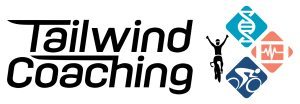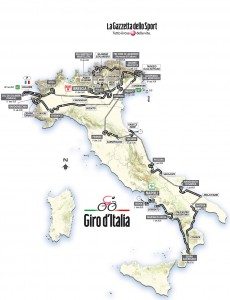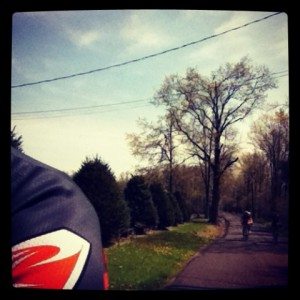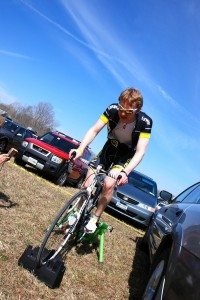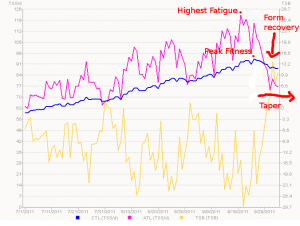Safe Cycling In The Rain (Podcast #16)
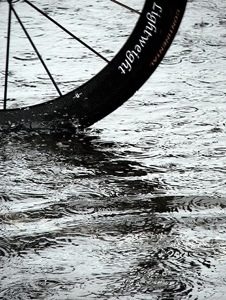 How many of have you looked out the window at raindrops falling from the sky and said “ugh, it’s raining. I don’t want to ride in this.” Be honest.
How many of have you looked out the window at raindrops falling from the sky and said “ugh, it’s raining. I don’t want to ride in this.” Be honest.
Good, now of those of you who answered “yes” to the last question, how many of you would ride in the rain if you felt more comfortable? How about if you could feel safer?
Riding in wet conditions, from damp roads to a driving rain, can not only be safe and comfortable, but it can even be fun. It’s a great way to keep you on your toes, keep your skills sharp and break out of the ordinary riding rut. Roads that are wet change character completely: climbs become more demanding of finesse to prevent wheels from slipping, descents require perfect lines and braking and handling skills are sharpened by the constant barrage to your senses. But in order to safely partake in these fitness and skill challenges, you’ll have to have the proper preparation and keep a few things in mind. In today’s podcast we’ll discuss a few of these such as:
- Proper dress for warmth (and maybe even dryness)
- Tips to ensure road safety, including braking distance and traction concerns
- Post ride concerns to make sure you recover well (and keep your bike happy)
As a side note, there’s only a few days left to take advantage of my Giro d’Italia modular training special. Remember to use coupon code “giro2013” to take 15% off all modular training plans. And keep a look out for my new Century Module, which will be coming out in the next week or so.
Questions and comments are always welcome. Post below to get the discussion rolling (hopefully in the dry.)
Podcast: Play in new window | Download (Duration: 39:59 — 18.3MB)
Subscribe: RSS
